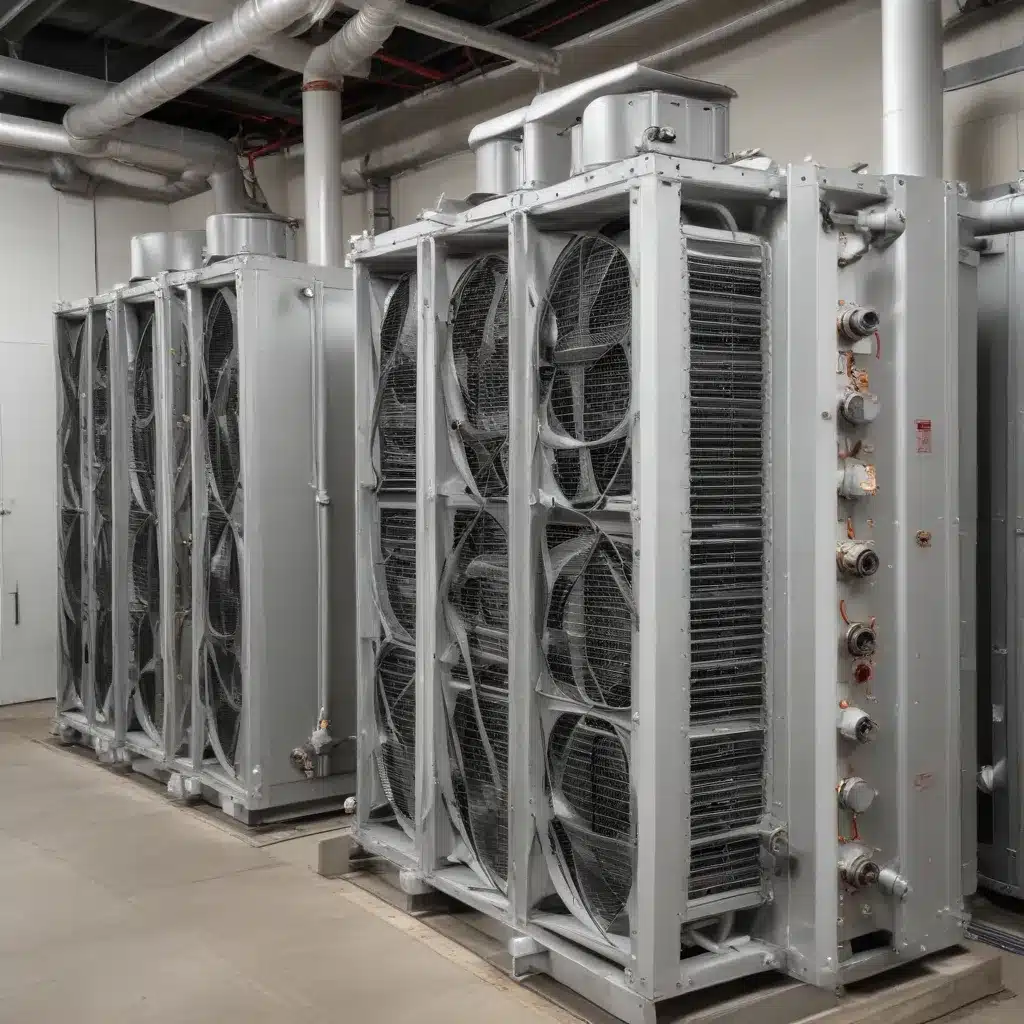
As a seasoned expert in air-cooled heat exchangers, I’ve witnessed firsthand the crucial role that proper airflow plays in ensuring efficient heat transfer and optimal system performance. Inadequate or uneven airflow distribution can significantly impact the overall effectiveness of an air-cooled heat exchanger, leading to a host of operational challenges. In this comprehensive article, we’ll delve into the common causes of airflow issues, provide practical troubleshooting tips, and explore strategies to optimize airflow distribution in various industrial applications.
Diagnosing Airflow-related Problems
Identifying the root cause of airflow issues is the first step in resolving any challenges with an air-cooled heat exchanger. Some of the most common indicators of airflow problems include:
Uneven Temperature Distribution
If certain sections of the heat exchanger are noticeably hotter or colder than others, it’s a clear sign of uneven airflow distribution. This can result in reduced heat transfer efficiency and potentially lead to accelerated equipment deterioration.
Increased Energy Consumption
When the air-cooled heat exchanger struggles to maintain the desired temperature, the system may work harder, consuming more energy to compensate for the airflow imbalance.
Excessive Noise or Vibrations
Obstructions, duct leaks, or fan malfunctions can cause the air-cooled heat exchanger to operate with increased noise or vibrations, indicating airflow problems.
Reduced Heat Transfer Capacity
If the heat exchanger is unable to effectively dissipate the required heat load, it may be a result of inadequate or unbalanced airflow across the heat transfer surfaces.
Premature Equipment Failure
Localized hot spots or areas of high thermal stress can lead to accelerated component wear and tear, ultimately shortening the lifespan of the air-cooled heat exchanger.
By carefully monitoring these common symptoms, you can pinpoint the underlying airflow-related issues and take the necessary steps to address them.
Identifying the Root Causes of Airflow Problems
Once you’ve recognized the signs of airflow challenges, it’s essential to investigate the potential causes. Some of the most prevalent factors contributing to airflow distribution issues in air-cooled heat exchangers include:
Fan or Blower Malfunctions
Damaged, worn-out, or improperly sized fans or blowers can significantly impact the overall airflow, leading to uneven distribution and reduced heat transfer efficiency.
Duct System Deficiencies
Leaks, obstructions, or poor duct design can disrupt the intended airflow path, causing imbalances and reducing the overall system performance.
Fouling or Blockages
Accumulation of dust, debris, or biological growth on the heat exchanger surfaces can impede airflow, leading to localized hot spots and reduced cooling capacity.
Improper System Sizing or Configuration
If the air-cooled heat exchanger is not properly sized for the application or the system configuration is suboptimal, it can result in airflow distribution challenges.
Environmental Factors
Ambient conditions, such as high temperatures, humidity, or wind, can influence the air-cooled heat exchanger’s ability to effectively dissipate heat, potentially causing airflow issues.
By thoroughly investigating these potential root causes, you can develop a comprehensive understanding of the specific airflow-related problems affecting your air-cooled heat exchanger.
Strategies for Optimizing Airflow Distribution
Once you have identified the underlying causes of the airflow challenges, you can implement targeted solutions to improve the air-cooled heat exchanger’s performance. Here are some effective strategies to consider:
Fan or Blower Upgrades
Replacing worn-out or undersized fans or blowers with more efficient and appropriately sized units can significantly enhance airflow distribution and overall system performance.
Duct System Optimization
Addressing duct leaks, obstructions, or design flaws through modifications, repairs, or system rebalancing can help ensure consistent and well-distributed airflow.
Fouling Prevention and Mitigation
Implementing robust maintenance protocols, such as regular cleaning, inspections, and the use of air filters, can help prevent or mitigate the buildup of contaminants on the heat exchanger surfaces.
System Redesign or Reconfiguration
If the existing air-cooled heat exchanger system is not optimally designed or configured for the application, a comprehensive review and potential redesign may be necessary to achieve the desired airflow distribution.
Environmental Considerations
Addressing external factors, such as wind patterns or high ambient temperatures, through the use of wind screens, shading, or supplementary cooling systems can help improve the air-cooled heat exchanger’s performance.
By implementing these strategies, you can effectively troubleshoot and resolve airflow distribution issues, ensuring the optimal performance and longevity of your air-cooled heat exchanger.
Predictive Maintenance and Continuous Optimization
Maintaining the optimal airflow distribution in an air-cooled heat exchanger is an ongoing process that requires a proactive approach. Implementing a robust predictive maintenance program can help you stay ahead of potential airflow challenges and maintain peak system efficiency.
Key elements of a successful predictive maintenance strategy include:
- Regular monitoring and data collection: Continuously track and analyze key performance indicators, such as temperature gradients, airflow velocities, and energy consumption, to identify emerging issues.
- Preventive maintenance and cleaning: Establish a routine maintenance schedule to clean the heat exchanger surfaces, inspect the fan or blower systems, and address any duct system deficiencies.
- Advanced analytics and modeling: Utilize sophisticated analytics tools and digital twin simulations to model airflow patterns, predict potential problem areas, and optimize system configurations.
- Continuous improvement: Regularly review system performance data, identify optimization opportunities, and implement necessary upgrades or modifications to enhance airflow distribution and overall efficiency.
By adopting a proactive, data-driven approach to airflow management, you can extend the lifespan of your air-cooled heat exchanger, minimize downtime, and ensure consistent, reliable performance across a wide range of industrial applications.
Conclusion
Maintaining optimal airflow distribution is a critical aspect of ensuring the efficient and reliable operation of air-cooled heat exchangers. By understanding the common causes of airflow issues, implementing targeted troubleshooting strategies, and embracing a proactive maintenance approach, you can overcome airflow-related challenges and unlock the full potential of your air-cooled heat exchanger systems.
Remember, the https://www.aircooledheatexchangers.net/ team is always here to provide expert guidance and support, helping you navigate the complexities of air-cooled heat exchanger design, maintenance, and performance optimization. Reach out to us today to learn more about how we can help you achieve your heating and cooling goals.

